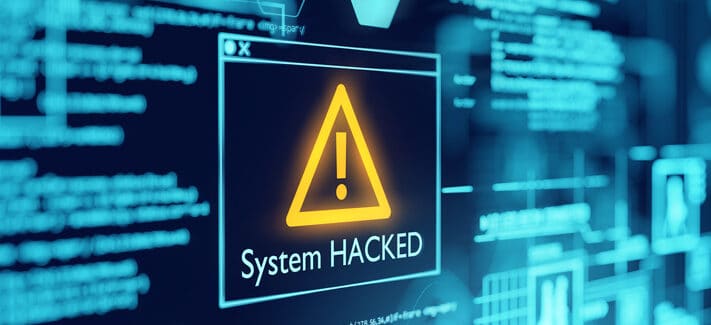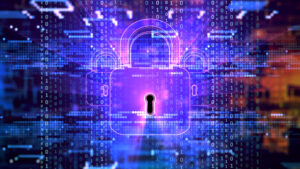
As I started to write this blog on recent ransomware observations, an email message popped up on my PC from our IT department advising of additional and more stringent security enhancements taking place almost immediately to toughen my company’s cybersecurity and increase our protection against current and emerging threats. A sign of these cybercrime times, indeed!
Ransomware Trending
According to a February 2022 Alert from CISA (Cybersecurity & Infrastructure Security Agency), 2021 trends showed an increasing threat of ransomware to organizations globally with tactics and techniques continuing to evolve in technological sophistication. So-called “big game” organizations like Colonial Pipeline, Kronos, JBS, Kaseya, and SolarWinds made the ransomware headlines over the past year or so. But according to the CISA Alert, by mid-2021, many ransomware threat actors, under pressure from U.S. authorities, turned their attention toward mid-sized victims to reduce the scrutiny and disruption caused by said authorities.
In a recent Enterprise Strategy Group (ESG) study, 64% of respondents said their organization had paid a ransom to regain access to data, applications, or systems. These findings are supported by the latest Threat Landscape report from the European Union Agency for Cybersecurity. It highlighted a 150% rise in ransomware in 2021 compared to 2020. The agency expects that trend to continue, and even accelerate in 2022.
But these numbers hide the stark reality of the ransomware scourge. Gangs like DarkSide, REvil, and BlackMatter are terrorizing organizations with ransomware – and they are getting smarter and more organized. They have moved beyond the basic ploy of infecting files, locking users out of their data, and demanding a fee. They still want money. But they also endanger reputations by exposing attacks, blackmailing companies by threatening to reveal corporate or personal dirty laundry, and selling intellectual property (IP) to competitors.
As a result, cybersecurity spending has become a priority in most organizations. According to ESG, 69% of organizations plan to spend more on cybersecurity in 2022 than in the previous year, while 68% of senior IT decision-makers identify ransomware as one of their organization’s top 5 business priorities. Such is the fear factor that organizations are now treating cybersecurity ahead of other organizational imperatives such as the cloud, artificial intelligence (AI), digital transformation, and application development.
New Federal Mandate and the SEC Takes Action
On March 15th, in an effort to thwart cyberattacks from foreign spies and criminal hacking groups, President Biden signed into law a requirement for many critical-infrastructure companies to report to the government when they have been hacked. This way, authorities can better understand the scope of the problem and take appropriate action.
It’s also no wonder that the Security and Exchange Commission (SEC) is taking action. On March 9th, the SEC voted 3 to 1 to propose reporting and disclosures related to cybercrime incidents and preparedness. In a nutshell, the SEC will be asking publicly traded companies:
Specifically, the SEC will want to know:
Holding publicly traded companies and their boards accountable for best practices in combating ransomware is a big step in the right direction and will no doubt free up the required budgets and resources.
Lowering the Fear Factor
Cybersecurity is already a top spending priority for 2022 and with SEC regulations looming, will likely continue to be a priority for quite some time. Companies are busy beefing up the tools and resources needed to thwart ransomware. They are buying intrusion response tools and services, extended or managed detection and response suites, security information and event management platforms, antivirus, anti-malware, next-generation firewalls, and more, including cybercrime insurance policies.
What may be missing in the spending frenzy, however, are some fundamental basics that can certainly lower the fear factor. Backup tools are an essential ingredient in being able to swiftly
Another smart purchase is software that scans data and backups to ensure that no ransomware or malware is hidden inside. It is not uncommon for a ransomware victim to conduct a restore and find that its backup files have also been corrupted by malware. Cleansing data that is ready to be backed up has become critical. These are some of the fundamental basics that need to be in place in the fight against ransomware. Organizations that neglect them suffer far more from breaches than those that take care of them efficiently.
Adding an Air Gap
Another fundamental basic is the elegantly simple air gap. When data is stored in the cloud, on disk, or in a backup appliance, it remains connected to the network. This leaves it vulnerable to unauthorized access and infection from bad actors. An air gap is essentially a physical gap between data and the network. It disconnects backed up or archived data from the Internet.
Such a gap commonly exists by partitioning in, or removing tapes from, an automated tape library and either storing them on a shelf or sending them to a secure external service provider. If that data is properly scanned prior to being backed up or archived to ensure it is free of infection, it offers certainty that a corruption-free copy of data exists. If a ransomware attack occurs, the organization can confidently fall back on a reliable copy of its data – and avoid any ransom demands.
Effectively Combatting Ransomware
There is no silver security bullet that will 100% guarantee freedom from ransomware. It is truly a multi-faceted strategy. Implementation of best-of-breed security tools is certainly necessary. But they must be supported by the steadfast application of backup and patching best practices and the addition of a tape-based air gap.
CISA, the FBI, and cybersecurity insurance companies all recommend offline, offsite, air-gapped copies of data. This can be achieved cost-effectively with today’s removable, and highly portable modern tape technology. The boards of publicly traded companies will likely want to do whatever it takes to demonstrate compliance with best practices to meet the SEC requirements. This should include air-gapped tape as part of a prudent and comprehensive strategy. A best practice in these cybercrime times, indeed!
